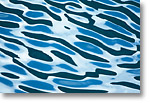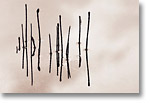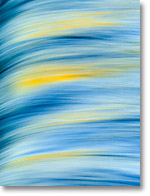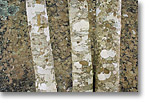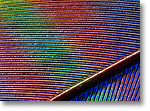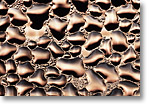|
There seems to be a common misconception in photographic circles that abstracts are pictures where the object photographed cannot be readily identified. Indeed, I just read a quote from a well-known photographer that stated, "If it is recognizable as an object Ė it is not an abstract." Does this mean if I can identify the object that was photographed then the image is not an abstract? But if someone else cannot identify the object, then the image becomes an abstract? Does this mean abstraction is viewer dependant? Or is there something deeper going on?
Alvin Langdon Coburn first used the term "abstract photography" in 1916 to suggest work that "emphasizes form and structure underlying the image." He is considered by most historians as the first photographer to consciously create an "abstract" by deconstructing the identity of his subjects using a Vortescope: a kaleidoscope-like apparatus with three mirrors that clamped onto the front of his lens. The resulting photo definitely emphasizes form and structure without revealing identity. Even in his earlier work, Coburn was "concealing" the identity of larger objects with his emphasis on form and structure such as in his 1912 photo of The Octopus.
Coburnís work with the Vortescope seems to reinforce the widely held idea that abstract photos should not depict subjects as they appear in the natural world. Indeed, the Oxford Dictionary defines abstract in art as "achieving its effect by form and colour rather than by realism." Other definitions I came across in books and on the web include the idea that "an abstract image is meant to make you wonder what you are looking at" or that "an abstract image only represents its own form" or that abstraction does not aim "to depict an object but is composed with a focus on internal structure or form."
What I take from these ideas is that abstract photography rejects the idea or goal of portraying something identifiable; rather, it prefers to emphasize the "components" of the object as the subject of the photo. But does that mean if we can "identify" the subject, that the image is not an abstract?
Freeman Patterson, considered by many to be a great abstract nature photographer, suggests that abstraction is simply using the "building blocks" (line and shape) of particular objects to present pure design. He calls abstracts that "donít represent anything in an obvious way but are essentially studies in pure design" non-representational. Freeman suggests that "abstract images should not be regarded as synonymous with non-representational images, pictures that canít be labeled." Freemanís ideas suggest that, just because a subject can be labeled, this does not negate it as an abstract. Indeed some photographers use the term "representational abstract" to describe images that are recognizable as objects but that have been stripped down to emphasize inherent design (e.g. Coburnís The Octopus would fall in this latter category).
Abstraction is really about learning to see the basic visual building blocks within your subject (line and shape, form and colour) and then arranging these components in pure design. Generally such an exercise will present the subject in an unusual way, and most often in "stripped down" form, often leaving the subject unrecognizable. But whether we still can or cannot recognize the subject is a moot point and neither negates nor validates the work as an abstract.
Going back to the opening quote, "If it is recognizable as an object Ė it is not an abstract," if the photographer literally meant that if viewers can identify what the subject is, then it is not an abstract, then he misunderstands the concept of abstraction. But if he meant that presenting the object as a recognizable "whole" means we havenít created an abstract, I would agree.
The photos included in this essay are for me "abstracts"; some are recognizable subjects, some are not. The basis of abstraction, in my opinion, is simply to strip a subject down to its basic elements and present these elements as the building blocks for the design of the image. But I am sure that some of the photos included will not "fit" everyoneís idea of abstract. I have found that trying to find a universal definition of abstract photography is, indeed, an abstract notion!
Comments on NPN nature photography articles? Send them to the editor. NPN members may also log in and leave their comments below.
Darwin Wiggett is a professional nature and outdoor photographer from Alberta, Canada. You can see more of his work at www.darwinwiggett.com or at www.timecatcher.com.
